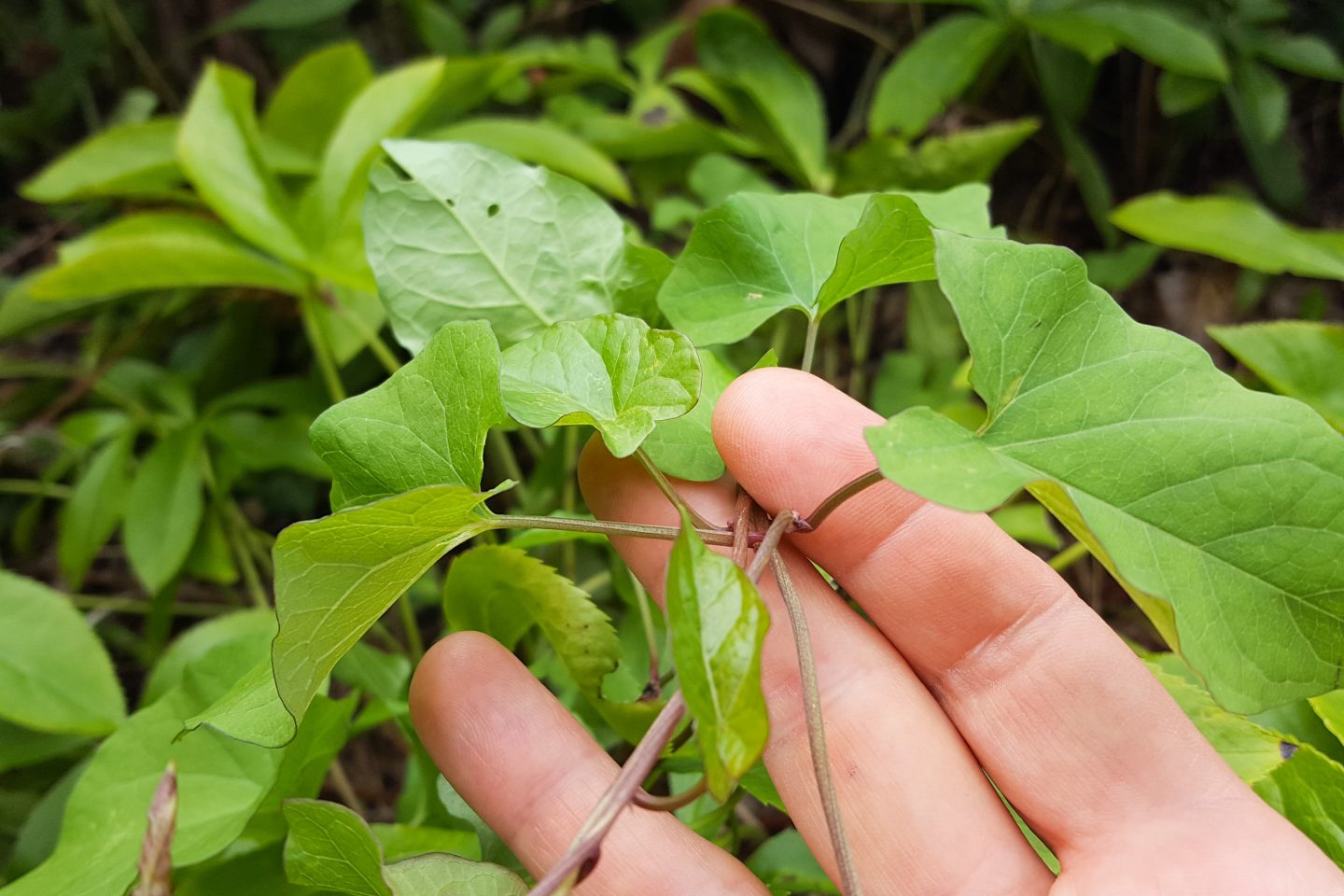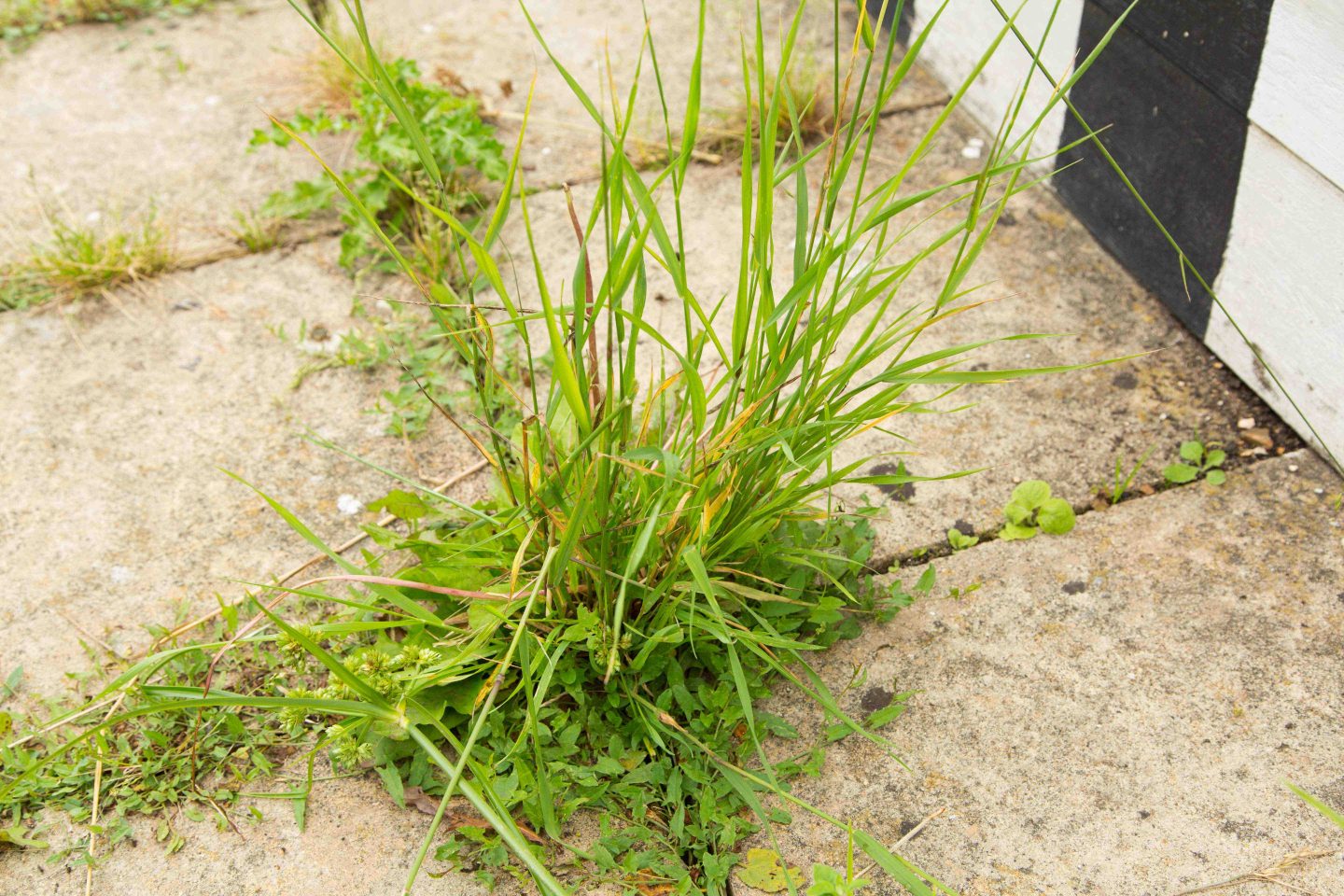
There is a big debate about what counts as a weed. One person's weed is another person's much-loved plant!
Really, a weed is just a plant you think is growing where you don't want it. Plenty of plants some people think of as weeds - like nettles - can bring great benefits to wildlife. Some can also grow quickly and take over your flower beds!
The plants below are the ones people most often prefer to remove from their garden. This doesn't mean you have to. Decide what's right for you and your garden.
Here are some images and advice on plants commonly considered to be weeds.
Another way to try and identify plants is to use a plant identifier app on your phone. The Google app, PlantSnap and Pl@ntNet are just some examples of these.
Bindweed

Bindweed is the Terminator of the weed world. You can cut it back, chop it down and pull it out, but it keeps coming back. As the name suggests, it does an amazing job at wrapping itself around other plants and squeezing the life out of them. It also grows fast, taking nutrients from soil.
To identify bindweed, look for a sprawling, climbing plant with roughly heart-shaped leaves. You may notice it wrapping itself around other plants. If it's grown quite big, you may also see trumpet-shape flowers. Bindweed looks similar to Morning Glory, but Morning Glory is not invasive. Morning Glory is more likely to have bright coloured flowers, while bindweed has white flowers.
Getting rid of bindweed takes time and effort. One method is to dig out every bit of its roots. You need to be sure you've removed it all, or it will be back. Another tactic is to cover and smother the plants and its roots for two years.
If that isn’t practical, you can continually fork out any sign of the plant. In time, it may be weakened enough that it gives up.
Dandelion

The dandelion is a plant that divides opinion. There is much to like about dandelions. They can be a source of nectar for bees, especially in early spring. Dandelions have deep roots. As the roots grow, they help break up soil that is compacted (solidly pressed together).
The downside of dandelions is they self-seed easily. A small number can quickly become a large number. Those deep roots that are helpful in the soil are also difficult to completely remove.
Dandelions are fairly easy to identify with their bright yellow flowers. The long, spike-shaped leaves grow from the bottom of the stem. Hawkbit is a plant that looks quite similar to a dandelion. It is a bit smaller, with hairy leaves.
If you want to remove dandelions, you will need to dig them out individually and completely. A bulb planter can be a really helpful tool for this. Read our guide to weeding for more tool advice.
Nettles

Another plant that is a friend as well as foe is nettle. For the wildlife gardener, nettles attract butterflies including peacocks, red admirals and small tortoiseshells who lay eggs in nettle patches. Nettles are great for making your own liquid plant food. They can also be used to make nettle tea.
The problem with nettles in gardens is that they can spread rapidly. As anyone who has ever brushed their hand against them can say, they also hurt when they sting you. Some people are particularly sensitive to them. Gardeners with visual impairment or anyone creating a sensory garden may be best removing any nettles.
Nettles are very easy to identify. The green leaves are shaped like a narrow heart and are toothed / serrated all the way around. The stems are also hairy. It's a good idea to get to know it by sight instead of by touch!
To remove nettles, first cut them back to the ground. Then, dig them out, making sure to remove the roots thoroughly. You will need thick gardening gloves for this and long-sleeved clothing.
Bramble

With its spiky woody stems and extensive roots, the bramble can literally be a real pain. Unchecked it will grow quickly with its stems rooting into the soil. Turn your back on it and it will turn into a thicket.
Again, there is much to love about brambles. Picking the fruit, blackberries, is a great joy. And brambles are important for wildlife as protection and a food source. But, this might be a plant best left to grow in the wild, unless you have a very large garden.
Brambles are generally quite easy to spot. There are usually 3 to 5 serrated leaves to a stem. These stems are likely to have sharp thorns on. If you're unlucky, you'll feel it before you see it!
To remove brambles, the best plan is to cut down and completely dig out the roots. As with nettles, you will want thick gardening gloves and protective clothing to reduce the risk of getting spiked by thorns.
Couch grass

Couch grass, also known as twitch grass, is very invasive. It spreads rapidly using underground stems. It can stop other plants in the garden growing, completely taking over the soil.
Couch grass can be a bit challenging to spot, as it can look a bit like regular grass. If you dig up a small patch, the long, white, dense roots may help you identify it.
To remove couch grass, you need to completely remove the root. This can be challenging and may mean battling it takes some time.
Ground elder

Ground elder grows quickly and aggressively in the garden. It spreads through its rhizomes. A rhizome is an underground stem that spreads horizontally and can then put out new roots and shoots and intervals.
Although ground elder used to be grown for its medicinal properties, it's not really used for this today. You could argue it makes a good ground cover plant. But, most gardeners think of it as one to remove.
To identify ground elder, looked for toothed leaves, often in groups of five. If it gets as far as flowering, in early summer you'll see tiny white flowers in an umbrella shape (umbel).
Ground elder is extremely difficult to remove completely because of the pesky rhizomes. Your best bet is to keep pulling it up and digging out what you can when you spot it. You may never entirely remove it, but you can at least limit its growth.

It can be easy to accidentally weed out wanted plants! There are ways to help avoid this. You could place a sign or bright-coloured label in front of your most loved plants so you know they are not weeds. This can be particularly helpful if you have any sight loss. You could also plant in blocks or lines so it’s easier to tell the wanted plants from the weeds.
Weeding is an activity to do little and often as it can be quite a physical task.
For advice on tools for different situations and how to reduce the strain, read our guide to weeding the garden.